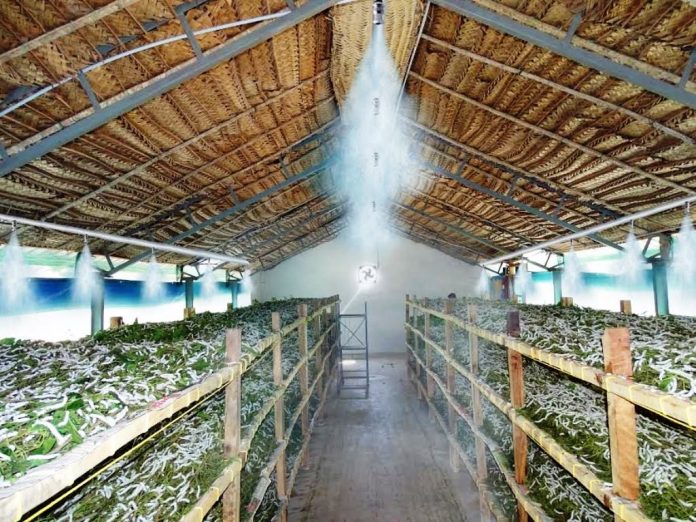Silkworms growth and silk yield are directly influenced by the quality of mulberry leaves fed. At the same time, climatic condition also plays an equal role as the silkworms are sensitive to the temperature and other abiotic factors.
Silkworms prefer cool climate with moderate humid condition. But in tropical zones, silk productivity is generally low in summer season mainly due to hike in temperature, fall of humidity and other factors like water scarcity, pests in mulberry garden and outbreak of diseases.
Management during summer
• Plant trees around the rearing shed to avoid the direct incidence of sunlight on the walls and to keep the environment naturally cool
• Hang wet gunny cloths around the rearing shed to allow cool, damp air to flow within or suitable air coolers can be used.
• Use of foggers to manage the microenvironment in the rearing house.
Management of silkworms during rainy and winter
Generally based on the stage of silkworm development, temperature of 24℃ to 28 ℃ has to be maintained. If the temperature of the rearing houses increases beyond 30℃, it directly affects the silkworm development and if temperature goes below 20℃ silkworm body temperature decreases and chawki worms are more prone to disease.
• Use of electric heaters or charcoal fires regulates the room temperature.
• Closing the doors and windows during the night time and opening it during day time to ensure air circulation and sunlight
• High relative humidity during winter relatively makes mulberry leaf wither and dry making it unfit for silkworm consumption becomes susceptible to diseases. Feeding leaf three times ensures the normal spacing.
Authors: M. Sharath, Dr. K.C. Narayanaswamy and Dr. Manjunath Gowda
Department of Sericulture, College of Agriculture, GKVK, UAS Bangalore-560065
Email: [email protected] Mob. No. 8971496497
































